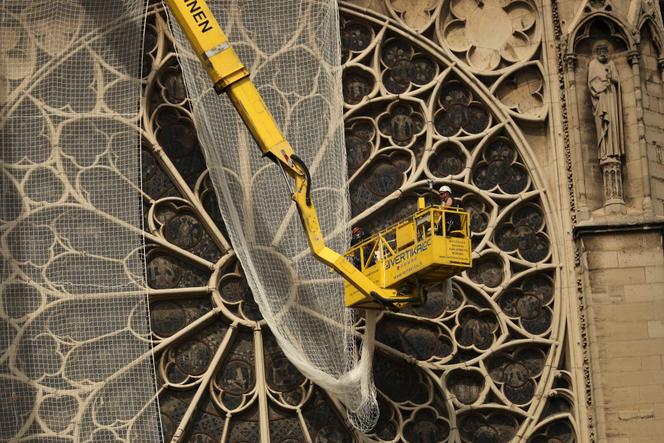


The monumental restoration of the Notre-Dame de Paris Cathedral is finally nearing its completion, with its reopening scheduled for December 7 and 8. The cathedral's journey ahead looks smooth, which is to be expected when you have €840 million in donations at your disposal; it's almost too much. Yet, while the disputes have been resolved, one lingering question continues to spark discussion in France: Should contemporary stained-glass windows be installed in six of the seven chapels along the south aisle?
Emmanuel Macron, who has made the cathedral's reconstruction a personal matter, wants them to be. The French president had long dreamed of an "architectural gesture," such as a titanium spire, a concrete frame, or a fluorescent or plant-covered roof. He had to settle for an "identical" reconstruction. It may lack panache, but it makes it easier to meet the five-year deadline he set, in order to welcome the 15 million visitors expected each year.
The contemporary touch at Notre-Dame now boils down to a substantial commission for 180 square meters of stained glass. The winners – an artist teamed with a master glassmaker – will be selected in November. The decision rests with the government, which means Macron. Yet this "act of government" must be qualified, as the Archbishop of Paris, Laurent Ulrich, and the Church as a whole are equally eager for this contemporary intrusion within the cathedral's 12th-century walls.
However, the proud alliance between the government and the Church is being significantly shaken up. Whatever people may say, this is not a battle between the ancient and the modern. Outside a few "ultra-traditional" circles, nobody is offended by the 104 black-and-white striped stained-glass windows, designed in 1994 by Pierre Soulages in the Sainte-Foy abbey in Conques (southern France). Similarly, the red-and-lead windows created in 1997 by Aurélie Nemours at the Salagon priory in the Alpes-de-Haute-Provence (southeast) are widely appreciated. Dozens of other examples could be cited, each equally deserving of respect. Furthermore, it would be foolish to adopt a blanket rejection of contemporary designs at Notre-Dame, where 92% of the stained glass windows already date from the 17th, 19th and 20th centuries.
The problem is that the six coveted chapels are already occupied. Their creator, Viollet-le-Duc (1814-1879), is not just anyone: in the 19th century, he oversaw the entire building's renovation. As a bonus, he added simple, geometric and colorful stained-glass windows. But this neutrality doesn't sit well with an architect with a strong neo-Gothic style. That was all the art commission needed to claim that Viollet-le-Duc's creation, a simple abstract grid, wasn't a significant work and could easily be replaced.
You have 56.29% of this article left to read. The rest is for subscribers only.
